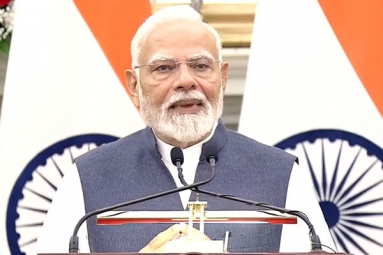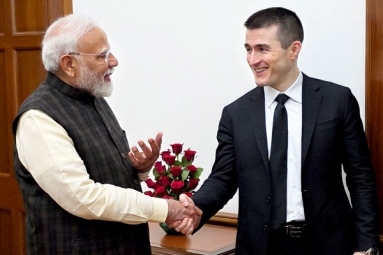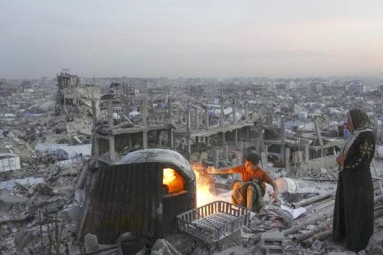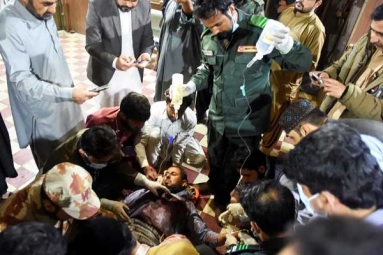How the world’s 2nd most populous country has just 1000 Covid-19 deaths?
April 30, 2020 20:20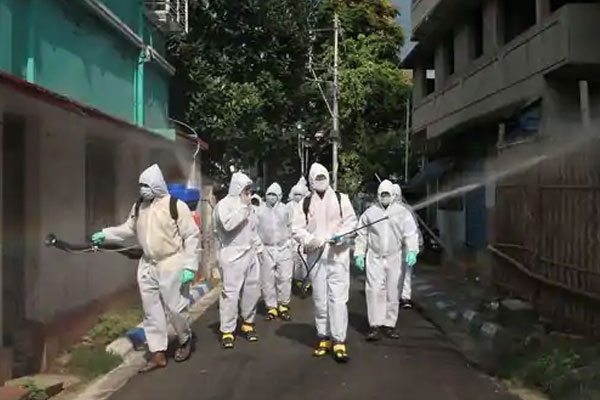
(Image source from: livemint.com)
With the picture of Covid-19 taking a turn for the worse, people have been looking at India wondering how a country with 1.3 billion population has managed to keep its Covid-19 deaths at 1000 as of now.
Experts predicted in the early days of the infection that India might experience millions of cases. Even doctors warned the authorities that India needed to take faster precautions before things took a turn for the worse.
So far, the country has avoided some of the worst case scenarios.
As of the reports on Tuesday, India has reported over 31,000 confirmed cases with over 1000 deaths. This took the tally report to 0.76 deaths per million. Comparing the same with the United States, the number of deaths per million is 175.
Some of the experts have reported that the nation’s early lockdown decision could be the one to be thankful for, at least now.
Even in one of his nation address, PM Narendra Modi said that India didn’t wait for things to get worse. The country has been extremely proactive with their decisions and has not let things pending. This is one of the many reasons why they have been able to control things before they took a turn for the worse.
Srinath Reddy, the president of the Public Health Foundation of India stated saying that India has won this round as the virus hasn’t been able to grapple the nation as it could have. But, that doesn’t mean that things have changed completely. It is not possible to completely close the book.
Swifter decisions by the Modi government
Right when India had a mere 600 cases, PM Narendra Modi announced a nationwide lockdown for 21 days. The scale of implication was not known but given that the country has a population of 1.3 billion, this was a monumental decision.
It was a very high stake decision. With so many daily wage earners, the sudden lockdown meant no earnings and no way to support their families. But, this decision was touted as good as reports suggested that India otherwise would have over 150 million confirmed cases.
Key measures following
After announcing the three week lockdown, the country also had some other important operations suspended to further contain the spread of the virus.
On March 11, India suspended all the tourist visas and even reported that the travellers who have been to some of the most infected parts of the world would have to be in quarantine for 14 days. Later on March 22, all the international flights were dismissed. The passenger train services were also banned.
What is the rate of testing in India?
While the country has taken enough measures to prevent further spread of the virus, it is not likely that India is testing enough.
Only 4% of the tests conducted are positive, as per the data shared by the Health Ministry of India. It is significantly a lot lower than US, where the rate is 17%.
In India, around 3% of the confirmed cases have died which is a lot less in comparison to countries like Italy, France etc.
The one thing India is lacking in is the lack of test per capita. Only 48 out of every 0.1 million people are being tested.
But, India is consistently working to increase its testing capabilities to further ensure better cure. With India not testing enough, it is putting the doctors and the medical frontline workers at risk with the mild and severe cases of the virus.
Is the death rate more than what is being informed?
Irrespective of a pandemic, only 22% of registered deaths in India are medically registered. This means that majority of the times; people aren’t even aware what the cause of the death is.
There are evidence that some of the Covid-19 deaths could have been flying under the radar. One of the resident doctors in a hospital in Mumbai reported that when they had dead bodies coming in, they didn’t test it for the coronavirus even when the symptoms of death sound similar.
"If the personal history shows that the person came in contact with someone who tested positive for the virus, we dispose of the body in the same way that we would for Covid-positive patients," the doctor said.
When did the impacts initiate?
Covid-19 was first detected in India on January 30 in Kerala, where a student who studied in Wuhan showed the symptoms.
It was also along this time that the worst hit nations across the world showcased the first confirmed reports of the virus. Experts are still trying to figure out what exactly the reason behind the different pattern of spread in India is.
While several of the experts thought that the hot temperatures could be a possible reason behind the staggered emergence of the virus in the country, WHO reports have clarified that the virus can very well sustain itself in the hotter weather conditions.
Another outlook on the lack of spread is believed to be the BCG vaccine which is mandatory for every Indian at birth to prevent the risks of Tuberculosis. Nothing has been set in stone yet.
Is the 40-days lockdown enough for the country?
Even with the controlled outbreak of the virus, it is not a time to celebrate for India. Things can get pretty messy pretty fast.
Several of the researchers and experts have reported that a surge is likely going to happen once the lockdown is lifted. Even though India was able to hit the pause button with the lockdown, the pause can’t be hit for long.
The determining factor, as the experts believe, is whether or not the restrictions are still viable even when the lockdown is lifted.
Experts have suggested that social distancing need to be maintained. Uttar Pradesh, which is one of the most populous states in the country, has extended a ban on any sort of public gatherings till the end of June.
One factor that the experts have suggested to be void is imposing age-specific lockdown. According to this, the older should stay inside while the younger ones go outside and get back to work. Even though the elderly are at risk, it is not a viable option at the moment.
Several researchers have even suggested saying that this is not going to linger for a month or even for 12 months. It is likely going to stay on till 18 months and it is a test on how every community responds during this time of crisis.
By Somapika Dutta





